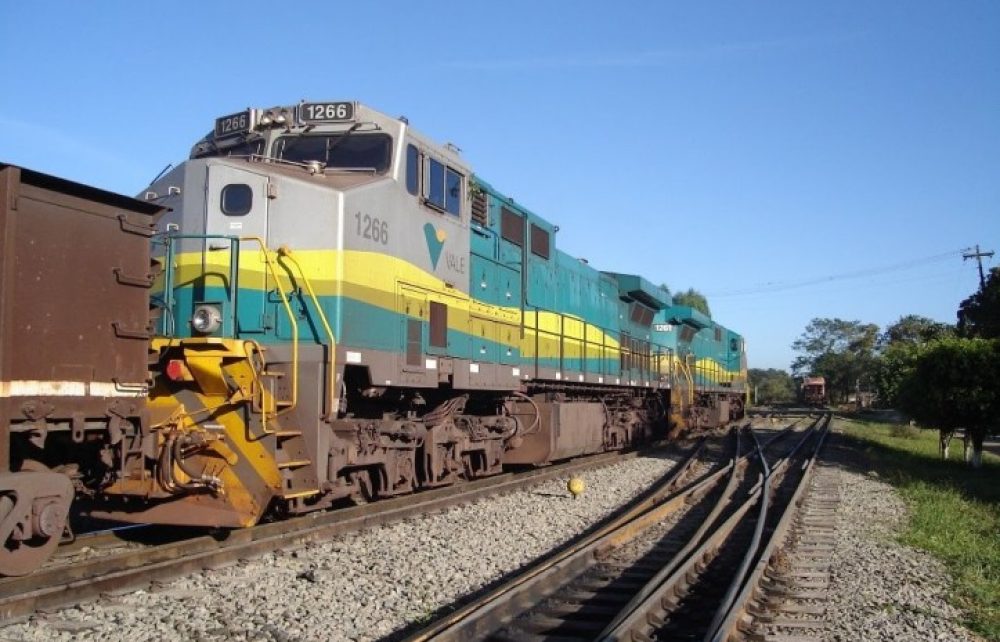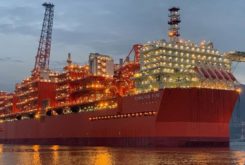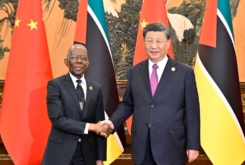Mozambique, as one of the poorest countries in the world, can be considered lucky to have so many valuable natural resources on its soil. From coal and gas to precious stones and timber, it has many raw materials that are in big demand in the rest of the world. It is up to the private sector to develop the required export projects but the government has a big role to play. It can create an attractive regulatory environment for potential investors, ensure transparent and fair governance and support the construction of infrastructure needed to ensure development.
There is little doubt that coal and gas attract the lion’s share of international attention on Mozambique. Low international prices and competition from other countries deterred the development of both mining and gas projects for several years but massive investment is now finally being made into the two sectors. Most coal and LNG production is likely to be shipped to China and other Asian markets. China’s appetite for LNG is growing as Beijing and other tiers of Chinese government seek to reduce coal consumption, particularly in the power sector, in an attempt to improve air quality.
The lack of transport infrastructure has been almost as big an obstacle to the development of the coal industry as low prices for both thermal and coking coal. Most of Mozambique’s 25 billion tonnes of proven coal reserves are located in Tete Province in the northwest of the country, a remote area that previously lacked the means to transport coal to coastal ports. Rail links to the ports of Beira and Nacala have now been completed and another route to a planned port at Macuse, near the mouth of the River Zambezi, is planned.
Most coal is produced by Brazilian mining company Vale, which has developed the Moatize project alongside its partner in Vale Moçambique, Mitsui. The mine has production capacity of 22 million tonnes/year but in August the company cut its production forecast for this year from 14 million tonnes to 10 million tonnes, blaming lower demand on the impact of the Chinese-U.S. trade war on international coal prices. However, Vale is committed to increasing output to 20 million tonnes/year by 2021.
Efforts are being made to market coal within Mozambique itself, particularly to planned coal fired power plants. Vale Moçambique announced in August that it would supply feedstock to a new coal fired power plant that China Energy Engineering Corporation plans to build in Nacala.
In the long run, Maputo still hopes to boost national output to 100 million tonnes/year. Tete alone seems to have sufficient reserves to enable this, while there should be enough rail capacity on the three rail lines to carry the coal to the coast, if the Macuse project is actually developed.
Yet the fate of the country’s coal industry lies in the hands of the international markets. Continued weak demand will deter further development, while international fears over global warming and the pollution caused by particulate matter from burning coal is likely to make coal consumption less and less desirable over time. It is possible that Mozambique’s newfound ability to develop its coal reserves has come too late for the country’s economy.
The value of gas
The long-term future for Mozambique’s gas industry could be brighter. Although gas also releases significant amounts of carbon into the atmosphere, the emissions are only about half those of coal fired plants. It also produces very low levels of particulates, sulphur and mercury, plus lower nitrogen oxide emissions than coal. It is therefore seen by many countries as a bridging fuel between dirtier fossil fuels and cleaner forms of energy.
South African synthetic fuels specialist Sasol already pipes natural gas from its Pande and Temane fields in the south of Mozambique to South Africa and is currently investigating the possibility of building a new pipeline to South Africa from the much bigger offshore gas reserves in the Rovuma Basin. However, the bulk of gas production from the northern offshore fields is to be exported in the form of liquefied natural gas (LNG) by three projects.
The final investment decision (FID) has already been taken on two of the projects: one of the world’s first floating LNG schemes, Coral LNG, which will have a production capacity of 3.4 million tonnes/year, and Anadarko’s Mozambique LNG project, which will produce 12.88 million tonnes/year (https://clbrief.com/anadarko-gives-the-green-light-to-mozambique-lng/).
The third is Eni’s Rovuma LNG venture, on which the FID is due this year and which will produce 15.2 million tonnes/year. The two onshore projects are being developed on the same site and have scope for expansion. This concentration of development at a joint location is an excellent means of cutting costs and speeding up development.
Other natural resources
Beyond gas and coal, Mozambique has a host of other natural resources, including forests for timber; 36 million hectares of arable land; and its hydroelectric resources, particularly on the Zambezi. The country has the world’s largest deposit of graphite in Cabo Delgado Province and heavy sands projects are being developed in Nampula and Zambezia provinces. There are also gemstones, gold, marble, limestone and iron ore, although more exploration is needed before the scale of the resources can be quantified.
The remote locations of many forests and small scale mines have allowed the growth of illegal logging and gem mining operations. The government has taken some steps to tackle the illicit timber trade (https://clbrief.com/chinese-timber-and-fishing-in-africa/) and in August announced that it would pay those prepared to testify against illegal gem miners. It is estimated that there are almost 6,000 illegal mining operations in Nampula Province alone (https://macauhub.com.mo/2019/08/20/pt-governo-de-mocambique-compensa-denunciantes-de-comercio-ilegal-de-pedras-preciosas/).
Managing development
The big challenges for the country are not so much in identifying its natural resources but in ensuring sound management and transparency. In 2009, Mozambique signed up to the Extractive Industries Transparency Initiative (EITI), which is a global scheme designed to assess the transparency of financing in the hydrocarbon and mining industries. In its latest update, the EITI board said that Maputo has “demonstrated meaningful progress in implementing the EITI Standard”, including enacting the transparency provisions in the 2014 Petroleum and Mining laws, which require details of contracts to be published.
Rogério Zandamela, the governor of the Bank of Mozambique, said that it was important that revenues were used to finance infrastructure projects and to support the development of human capital. The latter is generally taken to mean investing in health and education services to improve living standards, which in turn benefits the economy.
He said that having plentiful natural resources was not sufficient to create an inclusive economy if the communities where projects are based are not involved. He said: “I believe that the first great challenge is to integrate civil society, especially the youth, in the debate on how to create a national wealth fund that would allow the transformation of gains obtained by the exploitation of non-renewable natural resources to generate renewable resources.”
It is also vital that the development of valuable natural resources does not destabilise the economy. For instance, the value of Mozambique’s offshore gas reserves is now considered to be 50 times greater than its GDP. Of course, they will be developed over many years not just over twelve months, but even so exports of LNG could have a huge impact on the economy as a whole. It is the government and the Bank of Mozambique’s job to control the inflationary pressures that could result.
The oil curse
The biggest challenge for Mozambique will be avoiding what is usually called the ‘oil curse’, where countries receive a sudden burst of economic growth and income from the development of a particular natural resource. As with the example of oil in Nigeria and Angola over the past 40 years, other sectors of the economy are overlooked as the nation becomes overly reliant on a single commodity and much of the income is spent on sustaining a bloated bureaucracy that is not needed.
The end result is that the country would have been better off if it had never been discovered in the first place. Mozambique’s hidden debts and subsequent debt crisis suggest that Maputo is at very real risk of falling into the same trap, just a decade after about US$6 billion of its bad debts were written off (https://clbrief.com/debt-woe-continues-for-mozambique/).
Norway is advising Maputo on how to handle the sudden influx of gas revenue. Speaking in March, Øystein Olsen, the governor of the Central Bank of Norway, told his Mozambican audience that his country’s economic boom had been based on “sensible resource management, based on a well-functioning democracy and longstanding and trustworthy institutions”.
Olsen recommended that hydrocarbon revenue should benefit individual citizens. He added: “One main lesson is that depletable natural resources must be viewed as part of a country’s wealth. Revenues from extracting oil and gas are just a transformation of this wealth and should be managed with a long-term perspective.”
The development of oil and gas reserves has the potential to greatly benefit other parts of the economy. “Not only demand from the petroleum industry, but also innovations and technological skills developed in the industry can be of great value to other sectors. The productivity gains to the economy can be longer lasting than the petroleum industry itself”, said Olsen.




